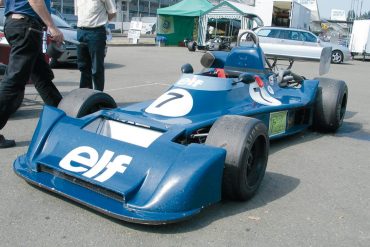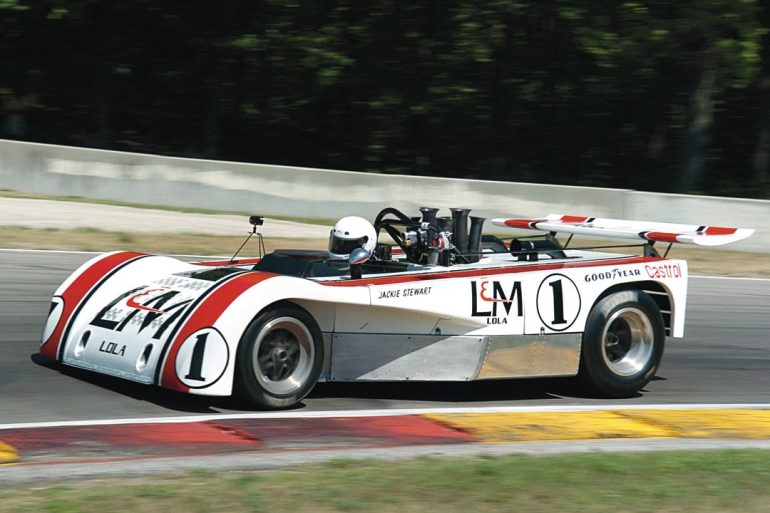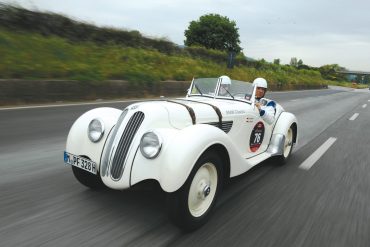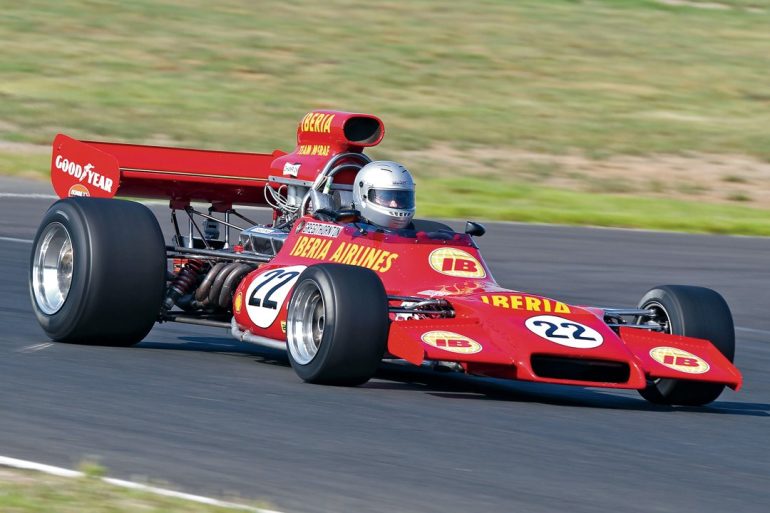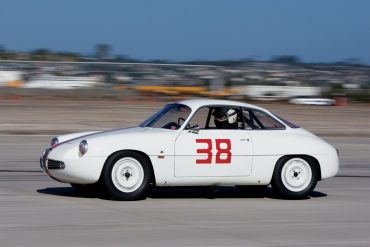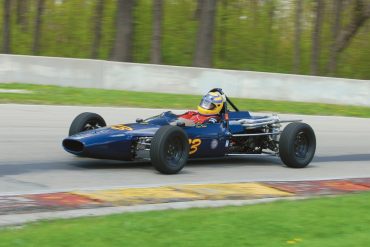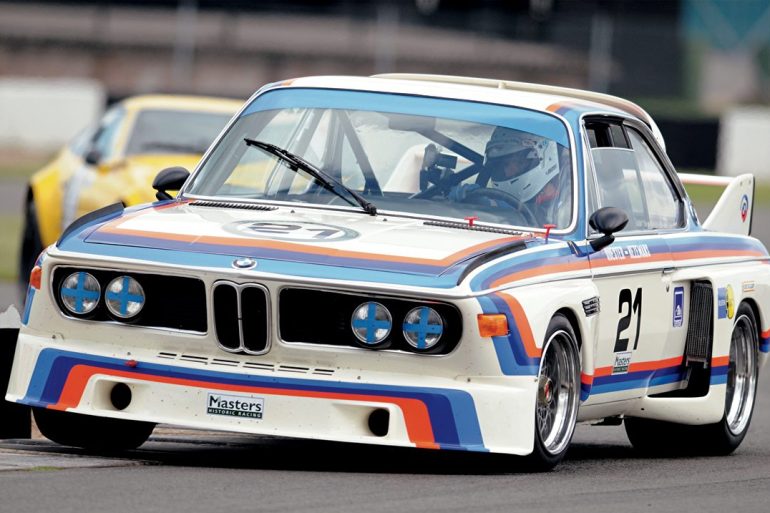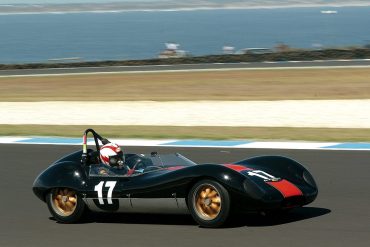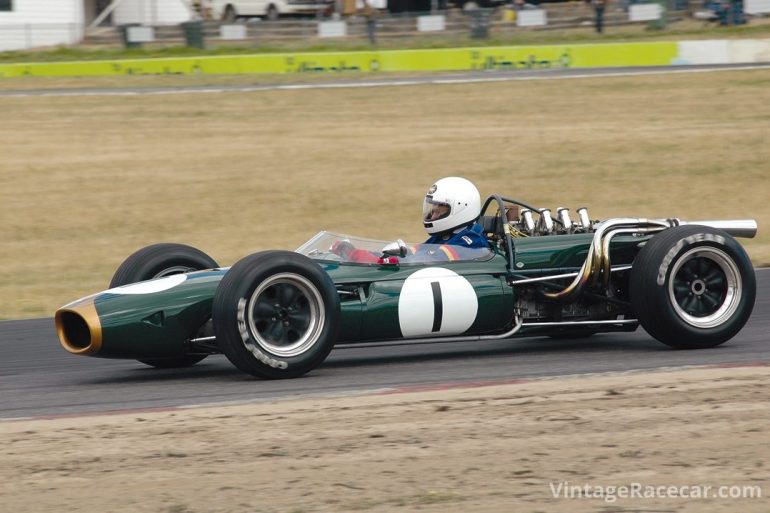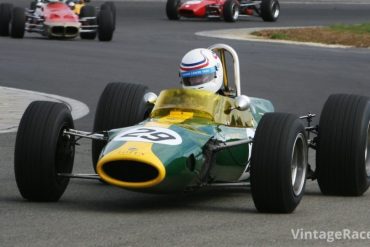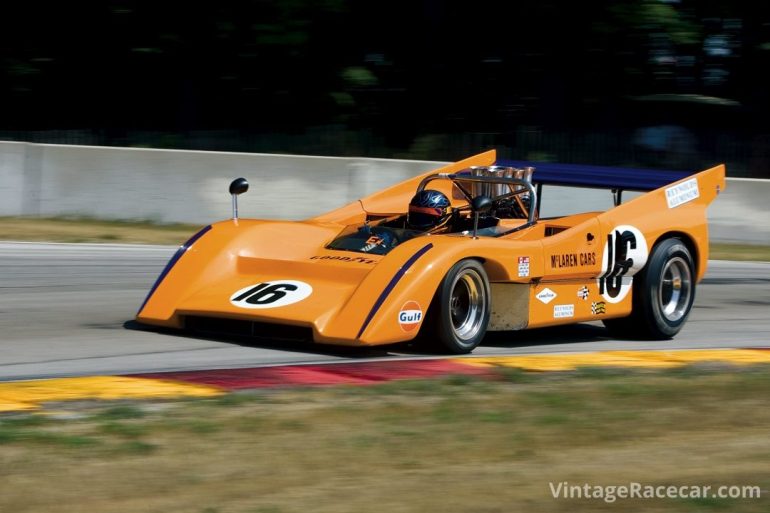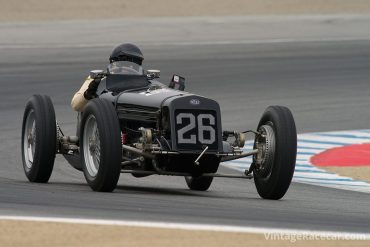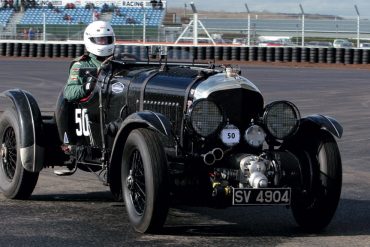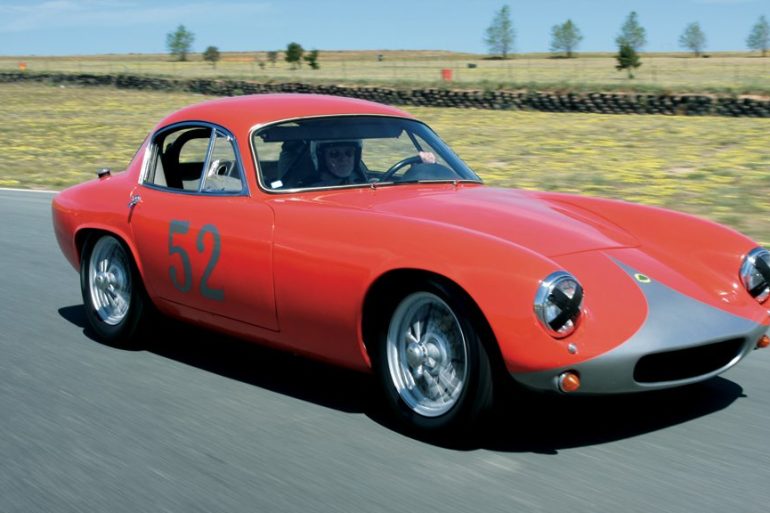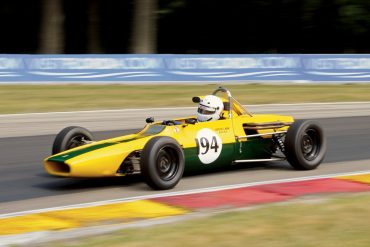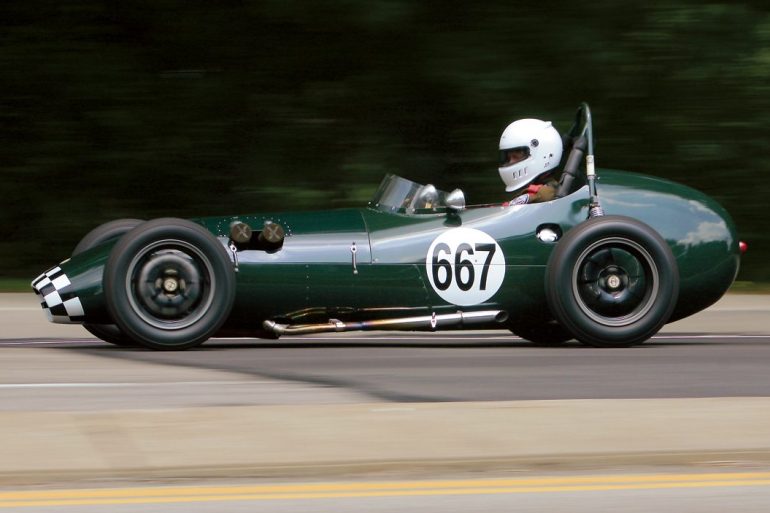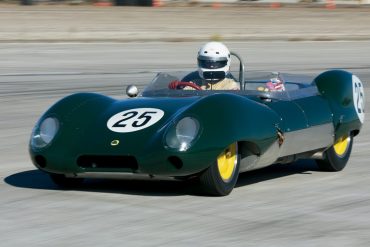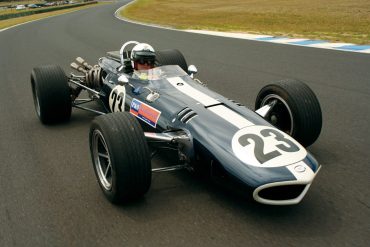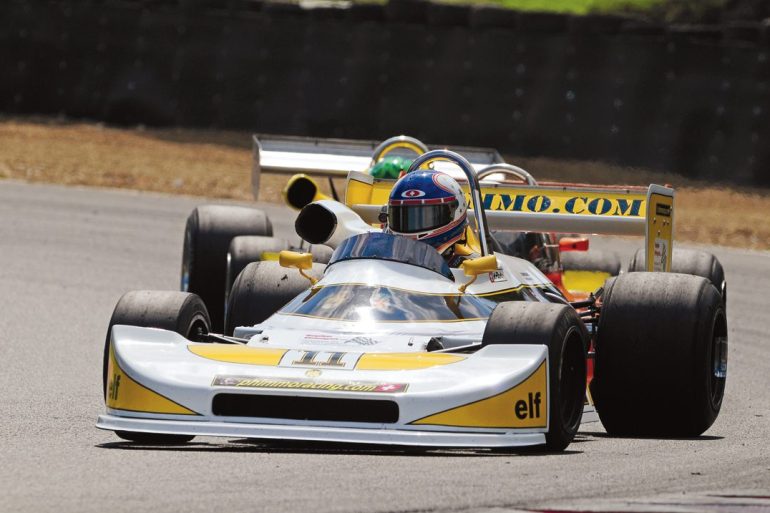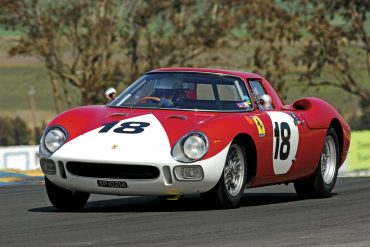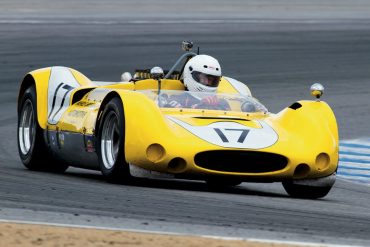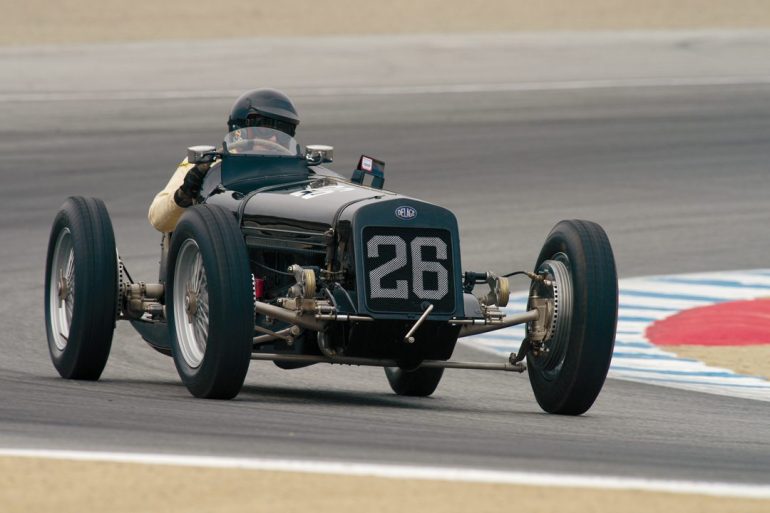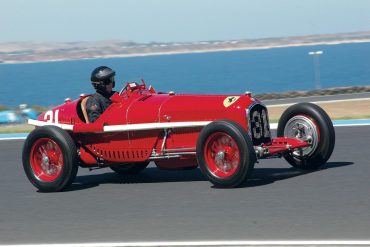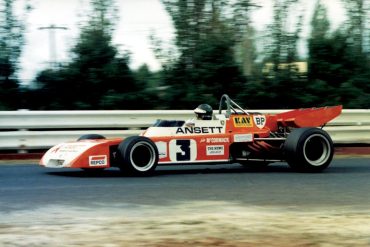From 1964 to 1978, a series of flat-bottomed formula cars were manufactured to serve as a steppingstone to Formula One...
The FIA sports prototypes were some of the most exciting purpose-built racing cars ever designed. They competed under the regulations...
The Canadian-American Challenge Cup was an “unlimited” racing series co-sanctioned by the SCCA in America and the CASC in Canada. Although governed by a basic set of rules—the cars had to be two-seaters with bodywork covering the wheels, have doors, a windscreen, brake lights and various safety requirements—there were no...
From the very beginning of the automobile man built cars to compete with a passion for speed and technology. These...
From the very beginning of the automobile, man built cars to compete with a passion for speed and technology. These...
Formula 5000 was a racing series for open-wheel, single-seater racing cars built to a specific set of rules. The engine of choice was the venerable small block Chevrolet V8 of five-liter displacement. It started as a bright idea in 1967 and ran successfully until politics between the governing body, race...
The under two-liter Grand Touring (GT) cars have always had a place to compete within the ever-changing regulations of international...
Formula Ford was a specification racing series created on the idea that the best drivers would win if they were...
Over 2-liter Grand Touring cars have always had a place to compete within the ever-changing regulations of International Motorsports; the World Sports Car Championship from 1953-1961, the Speedworld Challenge from 1962-1963, and the International Championship of Makes from 1972-1981. This included racing in the great endurance races such as the...
The Formula Junior category was introduced in Italy in 1958 by Count Giovanni Lurani, and in 1959 it became an...
Two-liter sports racing cars have always had a place to compete within the ever-changing regulations of international motorsports; the World...
After some 50 years of automobile racing, the Grand Prix Formula, or Formula One, was formed by the FIA (Federation Internationale de L’Automobile) in 1950, with its first race, the British Grand Prix at Silverstone. This was to be the first World Drivers Championship, in the world’s most technically advanced...
From 1964 to 1978, a series of flat-bottomed, formula cars were manufactured to serve as a stepping stone to Formula...
The FIA Sports Prototypes were some of the most exciting purpose-built racing cars ever designed. They competed under the regulations...
The Canadian American Challenge Cup was co-sanctioned by the SCCA and CASC; it was a series nicknamed the “unlimited” series. Although there was a basic set of rules, the cars had to be two-seaters with bodywork covering the wheels, have doors, a windscreen, brake lights and various safety requirements, there...
From the very beginning of the automobile man built cars to compete with a passion for speed and technology. These...
From the very beginning of the automobile, man built cars to compete with a passion for speed and technology. These...
The under 2-liter Grand Touring (GT) cars have always had a place to compete within the ever-changing regulations of international motorsports; the World Sports Car Championship from 1953-1961, the Speedworld Challenge from 1962-1963, the International Championship of Makes from 1964-1971 and the World Championship of Makes from 1972-1981. This included...
Formula Ford was a specification racing series created on the theory that the best drivers would win if they were...
Over 2-liter Grand Touring cars have always had a place to compete within the ever-changing regulations of international motorsports for,...
The under 2-liter Grand Touring (GT) cars have always had a place to compete within the ever-changing regulations of international motorsports; the World Sports Car Championship from 1953-1961, the Speedworld Challenge from 1962-1963, the International Championship of Makes from 1964-1971 and the World Championship of Makes from 1972-1981. This included...
Two-liter sports racing cars have always had a place to compete within the ever-changing regulations of international motorsports; the World...
After some 50 years of automobile racing, the Grand Prix Formula or Formula One was established by the FIA (Federation...
From 1964 to 1978, a series of flat-bottomed, formula cars were manufactured to serve as a stepping stone to Formula One and the upper echelons of open-wheeled racing. In the late ’50s, Formula Two and Formula Three were consolidated into Formula Junior. However, with that category’s demise at the end...
The FIA sports prototypes were some of the most exciting purpose-built racing cars ever designed. They competed under the regulations...
The Canadian-American Challenge Cup was co-sanctioned by the SCCA and CASC; it was a series nicknamed the “unlimited” series. Although...
From the very beginning of the automobile, man built cars to compete with a passion for speed and technology. These innovators are in an elite club, their place in automotive history guaranteed as the creators of a true classic sports car, a genuine thoroughbred. The development of the racing sports...
From the very beginning of the automobile, man built cars to compete with a passion for speed and technology. These...
Formula 5000 was a racing series for open-wheel, single-seater racing cars built to a specific set of rules. The engine...
The under 2-liter Grand Touring (GT) cars have always had a place to compete within the ever-changing regulations of international motorsports; the World Sports Car Championship from 1953-1961, the Speedworld Challenge of 1962-1963, the International Championship of Makes from 1964-1971 and the World Championship of Makes from 1972-1981. This included...


